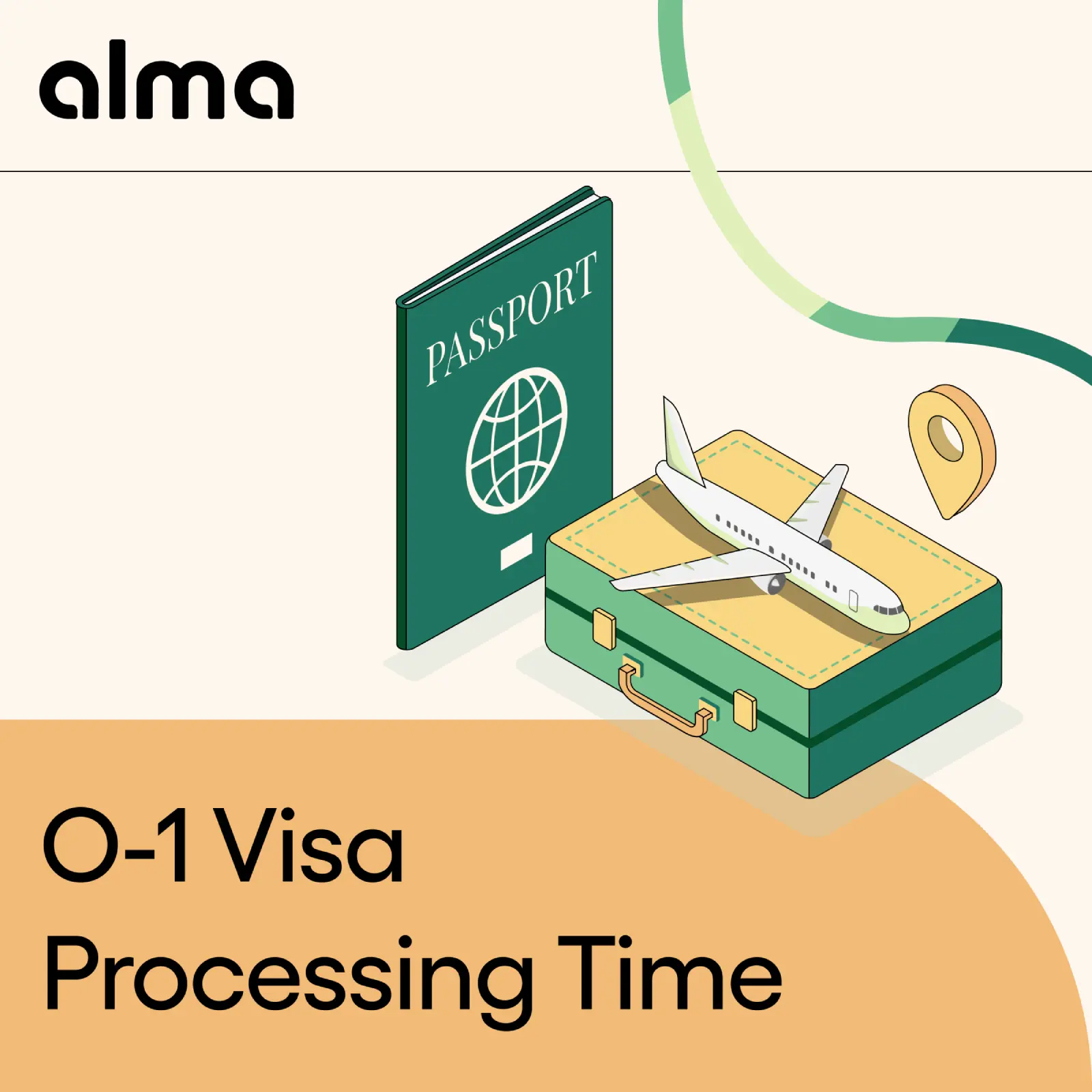- Global denial rates vary dramatically from 1.46% to 76.59% - Country of origin remains the strongest predictor of visa approval, making expert legal guidance from Alma's immigration attorneys critical for applicants from high-risk countries
- Student visa denials hit record 36% while H-1B denials dropped to just 2.15% - The divergence between visa categories highlights why specialized legal expertise delivers better outcomes for employment-based applications
- Section 214(b) affects over 3 million applicants annually - Understanding specific refusal grounds and preparing comprehensive documentation dramatically improves success rates
- Consular processing shows higher denial rates than USCIS adjustment of status for employment-based green cards - This disparity makes choosing the right filing strategy and legal representation essential for green card success
- 84.89% of administrative processing cases eventually get approved - Persistence and proper response to Section 221(g) requests leads to successful outcomes in most cases
- Professional legal preparation correlates with approval rates above 99% - Data shows attorney-guided applications significantly outperform self-filed petitions across all visa categories
Comprehensive denial rate data compiled from U.S. Department of State reports, USCIS statistics, and immigration research organizations
Overall U.S. Visa Denial Rate Statistics for 2024
- Guinea-Bissau faces the highest B-1/B-2 tourist visa denial rate at 76.59% in fiscal year 2024. The 76.59% denial rate for Guinea-Bissau nationals represents the most challenging approval environment globally. This extreme denial rate means fewer than one in four applicants from this West African nation successfully obtain tourist visas. Working with experienced immigration attorneys who understand country-specific challenges becomes essential for overcoming these statistical disadvantages.
- The United Arab Emirates enjoys the lowest denial rate at just 1.46% for B-1/B-2 visas. UAE nationals experience nearly automatic approval with only 1.46% denied for tourist and business visitor visas. This exceptional approval rate reflects strong economic ties and low overstay risk from UAE citizens. The 75-point spread between highest and lowest denial rates demonstrates how dramatically nationality impacts visa outcomes.
- Section 214(b) nonimmigrant intent failures affect over 3 million visa applicants annually. The most common denial ground impacts over 3 million applicants who cannot demonstrate sufficient ties to their home countries. Section 214(b) is the most common nonimmigrant visa refusal ground - while not appealable, applicants may reapply if circumstances change. Alma's visa experts help clients build stronger nonimmigrant intent cases from the start, avoiding this common pitfall.
Nonimmigrant Visa Application Denial Statistics
- H-1B visa denial rates plummeted to 2.15% in fiscal year 2025, the lowest in over a decade. The dramatic improvement to just 2.15% denial rate for H-1B specialty occupation visas marks a significant policy shift. This near-universal approval rate for properly prepared H-1B petitions underscores the value of professional legal services in navigating complex employment immigration. Companies using experienced immigration counsel achieve even better results than these already impressive statistics.
- Student visa denials reached a record high of 36% in 2023. International students face unprecedented challenges with 36% denied visas despite acceptance at approved universities. This denial rate has more than doubled from the 15% low point in 2014, creating significant barriers to U.S. education. The sharp increase makes professional guidance critical for students navigating increasingly stringent consular reviews.
- 253,355 student visas were denied in 2023, exceeding total issuances from 2002 and 2005 combined. The sheer volume of denials—253,355 students rejected in a single year—represents lost educational opportunities and economic impact. This number surpasses the total student visas issued during entire years in the early 2000s. Such massive denial volumes highlight systemic challenges requiring expert navigation.
B-2 Tourist Visa Denial Rates by Country
- China's B-1/B-2 denial rate improved slightly from 26.63% to 25.37% between fiscal years 2023 and 2024. Chinese nationals saw modest improvement with denial rates dropping to 25.37% in FY2024, though still facing significant challenges. One in four Chinese tourist visa applicants receives a denial, requiring careful preparation and documentation. Alma's immigration platform helps businesses sponsor Chinese talent through more reliable employment-based pathways.
- B-1/B-2 visas show the highest overall refusal rate at 27.8% globally. Tourist and business visitor visas face 27.8% denial rates worldwide, affecting nearly 2.49 million people in 2024 alone. This category consistently shows higher denial rates than employment-based visas with defined sponsors. The elevated risk makes thorough preparation and understanding of consular expectations crucial for visitor visa success.
Common Reasons for DS-160 Visa Application Denials
- Section 221(g) administrative processing affects 225,279 applicants with 84.89% eventually approved. While initially concerning, 84.89% overcome Section 221(g) administrative processing through supplemental documentation. This high eventual approval rate demonstrates that persistence and proper response to document requests leads to success. Understanding administrative processing requirements helps applicants avoid unnecessary anxiety during extended review periods.
- Section 214(b) denials remain difficult to overcome on reapplication. Section 214(b) is the most common nonimmigrant visa refusal ground and is not appealable, though applicants may reapply if circumstances change significantly. This statutory bar for insufficient nonimmigrant intent proves extremely difficult to reverse without demonstrable changed circumstances. Professional visa preparation prevents these devastating denials through comprehensive initial applications.
Employment-Based Immigration Denial Disparities
- Consular processing shows higher denial rates than USCIS adjustment of status for employment-based green cards. The disparity in approval rates between consular processing and USCIS adjustment of status creates different risk profiles for green card applicants. This difference in denial rates makes choosing the right filing strategy essential for employment-based immigrants. Alma's green card services help clients navigate the safer adjustment of status pathway when eligible.
- EB-2 National Interest Waiver denials surged to 37.2% in Q1 of fiscal year 2025. The 37.2% denial rate for EB-2 NIW petitions now exceeds even EB-1A extraordinary ability denials at 25.1%. This reversal in traditional approval patterns signals heightened scrutiny of self-sponsored green card applications. Expert legal counsel becomes essential for crafting compelling NIW cases that meet evolving adjudication standards.
- Green card denial rates average 10% for both employment and family-based categories. Overall green card applications face 10% denial rates across categories in fiscal year 2024. While lower than many nonimmigrant visa denials, the permanent stakes make each application critical. Alma's 99%+ approval rate far exceeds these averages through meticulous preparation and attorney expertise.
Demographic and Regional Denial Patterns
- African students experience 52% average F-1 denial rates over five years. The systematic challenge facing African students shows in 52% denial rates sustained over a five-year period. An estimated 92,051 qualified African students were denied between 2018-2022, representing massive lost educational opportunities. These disparities highlight the critical need for specialized guidance in overcoming geographic bias.
- K-1 fiancé visas face 25% denial rates, though refiling is possible after refusal. The high-stakes nature of K-1 applications shows in substantial denial rates with complex appeal options. While consular determinations are not appealable, I-129F petitions can be refiled and cases can be re-presented with additional evidence. This dynamic makes professional legal assistance particularly valuable for fiancé visa applicants.
Frequently Asked Questions
Countries in Africa and parts of Asia face the highest denial rates, with Guinea-Bissau at 76.59% leading globally. African students specifically face 52% average denial rates, while nations like the UAE enjoy rates below 2%. These disparities make country-specific legal strategies essential for success.
Understanding your specific denial reason is crucial—84.89% overcome Section 221(g) administrative processing with proper documentation. Section 214(b) denials are more challenging to overcome and require demonstrating significant changed circumstances. Alma's immigration attorneys analyze denial reasons and develop targeted strategies for reapplication or alternative visa pathways.
H-1B visas benefit from employer sponsorship and clear regulatory requirements, achieving 2.15% denial rates compared to 27.8% for B-1/B-2 tourist visas. Employment-based petitions with professional legal preparation demonstrate stronger ties and clearer temporary intent than self-sponsored visitor applications.
The data shows consular processing typically has higher denial rates than USCIS adjustment of status for employment-based green cards. Alma's green card services help eligible applicants pursue the statistically safer adjustment pathway while maintaining legal status.
Section 214(b) failure to establish nonimmigrant intent affects over 3 million applicants annually, making it the leading denial reason. Proving strong ties to your home country and temporary U.S. intent requires careful documentation and presentation strategies that Alma's platform helps companies and individuals develop.



.png)




